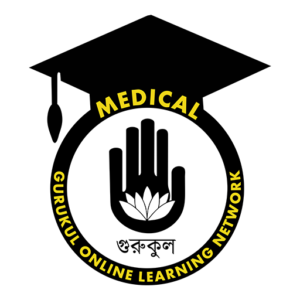Food & Nutrition – Respiratory Quotient (RQ) by Medical Education, Health Education Gurukul [GOLN]. “Respiratory Quotient (RQ)” আমাদের আজকের আলোচনার বিষয়। “Respiratory Quotient (RQ)” ক্লাসটি “এমবিবিএস [ MBBS ]” এর “জৈব রসায়ন [ Biochemistry ]” সাবজেক্ট এর “খাদ্য ও পুষ্টি [ Food & Nutrition ]” অধ্যায়ের পাঠ। “এমবিবিএস [ MBBS ]” এর “জৈব রসায়ন [ Biochemistry ]” সাবজেক্ট এর “Food, Nutrition, Nutrients & Diet” অধ্যায়ের সকল ক্লাস পেতে যুক্ত থাকুন “Medical Education, Health Education Gurukul” এর সাথে।
Food & Nutrition – Respiratory Quotient (RQ)
he respiratory quotient (RQ or respiratory coefficient) is a dimensionless number used in calculations of basal metabolic rate (BMR) when estimated from carbon dioxide production. It is calculated from the ratio of carbon dioxide produced by the body to oxygen consumed by the body. Such measurements, like measurements of oxygen uptake, are forms of indirect calorimetry. It is measured using a respirometer.
The respiratory quotient value indicates which macronutrients are being metabolized, as different energy pathways are used for fats, carbohydrates, and proteins. If metabolism consists solely of lipids, the respiratory quotient is approximately 0.7, for proteins it is approximately 0.8, and for carbohydrates it is 1.0.
Most of the time, however, energy consumption is composed of both fats and carbohydrates. The approximate respiratory quotient of a mixed diet is 0.8. Some of the other factors that may affect the respiratory quotient are energy balance, circulating insulin, and insulin sensitivity. It can be used in the alveolar gas equation.

Applications
Practical applications of the respiratory- quotient can be found in severe cases of chronic obstructive pulmonary disease, in which patients spend a significant amount of energy on respiratory effort. By increasing the proportion of fats in the diet, the respiratory- quotient is driven down, causing a relative decrease in the amount of CO2 produced. This reduces the respiratory burden to eliminate CO2, thereby reducing the amount of energy spent on respirations.
Respiratory Quotient can be used as an indicator of over or underfeeding. Underfeeding, which forces the body to utilize fat stores, will lower the respiratory quotient, while overfeeding, which causes lipogenesis, will increase it. Underfeeding is marked by a respiratory quotient below 0.85, while a respiratory- quotient greater than 1.0 indicates overfeeding. This is particularly important in patients with compromised respiratory systems, as an increased respiratory quotient significantly corresponds to increased respiratory rate and decreased tidal volume, placing compromised patients at a significant risk.
Because of its role in metabolism, respiratory quotient can be used in analysis of liver function and diagnosis of liver disease. In patients with liver cirrhosis, non-protein respiratory- quotient (npRQ) values act as good indicators in the prediction of overall survival rate. Patients having a npRQ < 0.85 show considerably lower survival rates as compared to patients with a npRQ > 0.85. A decrease in npRQ corresponds to a decrease in glycogen storage by the liver.
Similar research indicates that non-alcoholic fatty liver diseases are also accompanied by a low respiratory- quotient value, and the non protein respiratory -quotient value was a good indication of disease severity.

Recently the respiratory quotient is also used from aquatic scientists to illuminate its environmental applications. Experimental studies with natural bacterioplankton using different single substrates suggested that RQ is linked to the elemental composition of the respired compounds. By this way, it is demonstrated that bacterioplankton RQ is not only a practical aspect of Bacterioplankton Respiration determination, but also a major ecosystem state variable that provides unique information about aquatic ecosystem functioning.
Based on the stoichiometry of the different metabolized substrates, the scientists can predict that dissolved oxygen (O2) and carbon dioxide (CO2) in aquatic ecosystems should covary inversely due to the processing of photosynthesis and respiration. Using this quotient we could shed light on the metabolic behavior and the simultaneous roles of chemical and physical forcing that shape the biogeochemistry of aquatic ecosystems.

Food & Nutrition – Respiratory Quotient (RQ) class details:
See also :
